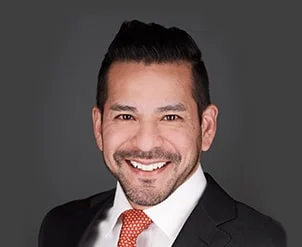What’s the Difference Between Chapter 7 and Chapter 13?

In a nutshell, both of these federal debt relief programs are the same in the middle but different on the front and back ends.
The Automatic Stay applies in both these types of consumer bankruptcies. In most cases, Section 362 of the Bankruptcy Code takes effect immediately after filing. It applies to all forms of adverse creditor action, including:
- – Wage garnishment,
- – Foreclosure,
- – Repossession, and
- – Creditor lawsuits.
Unless the debtor has filed bankruptcy in the recent past or there are fraud questions, the Automatic Stay lasts for the duration of the case. Moneylenders must get special permission from the judge to get around the stay, and that’s not easy to do.
Chapter 7 and Chapter 13 both include a meeting with the bankruptcy trustee (person who oversees the bankruptcy for the judge). But as outlined below, the trustee’s role in a 7 is much different from the trustee’s role in a 13.
Beginning and End of a Chapter 7 in Illinois
These bankruptcies are designed to help people with limited incomes who are struggling with unsecured debt, such as medical bills and credit cards.
To verify income, Chapter 7 debtors must pass the means test. Their monthly income must be below average. As of January 2019, the average income in Illinois is $96,252 a year for a family of four. That figure changes every few months.
That average figure is only a presumption. There is a big difference between income and expenses in Chicagoland and income and expenses in Kankakee. The means test takes these differences into account.
Typically, Chapter 7 bankruptcies also feature immediate debt discharge. Unless the trustee sees red flags in the 341, the judge usually signs the discharge order a few months after the trustee meeting. So, people get their fresh starts very quickly.
Significantly, Chapter 7 discharges unsecured debts, but it does not address the collateral consequences of these debts. Assume Ricardo files Chapter 7 and discharges some past-due income taxes. If the IRS already filed tax liens, he must address the liens separately from the bankruptcy.
Beginning and End of a Chapter 13 in Indiana
People must also qualify for Chapter 13. Currently, debtors must have less than $1.2 million in secured debt to file Chapter 13. Like the means test figure, the debt ceiling is subject to periodic change.
That $1.2 million includes all secured debt, such as home mortgage and auto loans. So, based on the fair market value of their assets, some families may brush against the debt ceiling. Fortunately, there is a difference between fair market value and as-is cash value. For example, a home investor might only offer pennies on the dollar for a house. That’s the value that debtors must declare on Schedule A.
Chapter 7 debtors must have limited incomes, but Chapter 13 debtors must have higher incomes. They must have sufficient disposable income to fund a monthly debt consolidation payment. At the 341, the trustee combines all delinquent secured debt, such as past-due mortgage payments, into one installment. The debtor then has up to five years to erase these delinquencies.
Typically, the Automatic Stay remains in effect the entire time. So, most moneylenders must accept the income-based repayment plan, whether they like it or not.
Contact Dedicated Lawyers
There are some key differences between a Chapter 7 and a Chapter 13. For a free consultation with an experienced bankruptcy attorney in Chicago, contact the Bentz Holguin Law Firm, LLC. Convenient payment plans are available.
Resource:
https://www.law.cornell.edu/uscode/text/11/362


